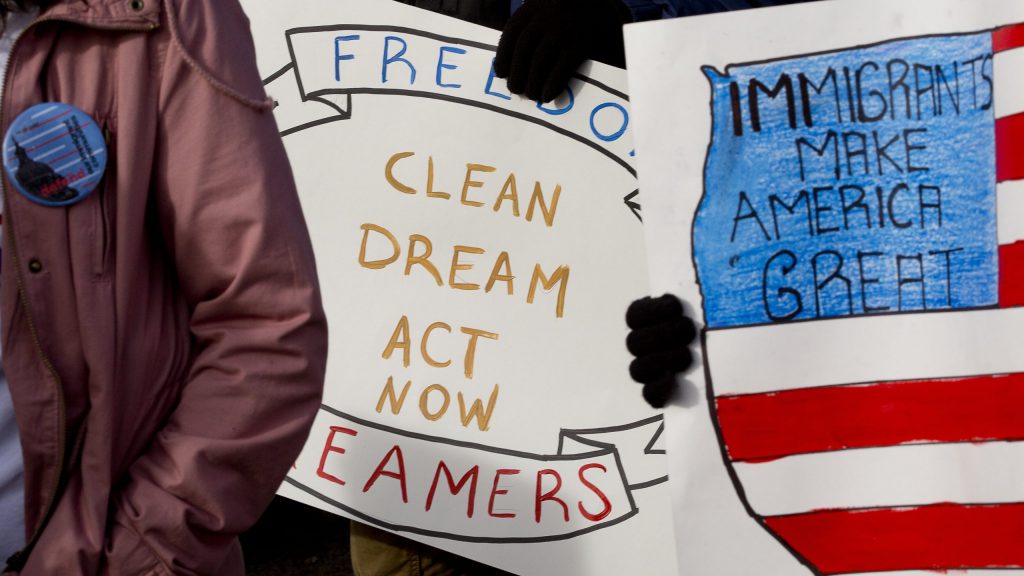An alliance of presidents of U.S. colleges and universities, including Catholic institutions, said the bipartisan DREAM Act of 2021 "represents the first step to restore certainty into the lives of young adults, students, and other aspiring Americans who want nothing more than to be an integral part of the fabric of this country."
"The last four years have been a time of tremendous adversity for the immigrant community, particularly in light of the multiple attempts to terminate DACA," the Deferred Action for Childhood Arrivals, said Jose Magana-Salgado, speaking on behalf of the Presidents' Alliance on Higher Education and Immigration, the group's director of policy and communications.
"We urge the Senate to move forward as expeditiously as possible," he said.
The alliance is made up of the presidents and other leaders at dozens of colleges and universities, including over 20 Catholic universities. Its mission is to increase "public understanding of how immigration policies and practices impact our students, campuses and communities" and to created "a welcoming environment for immigrant, undocumented and international students on our campuses."
Magana-Salgado's statement followed the introduction of the latest version of Development, Relief and Education for Alien Minors Act, or DREAM Act, introduced in the Senate Feb. 4 by Sens. Dick Durbin, D-Illinois, and Lindsey Graham, R-South Carolina.
The name "Dreamers" is taken from the bill's title and refers to the young adults who were brought by their parents to the U.S. illegally as children and remain in the country under DACA. Currently the program protects about 700,000 young people who qualify from deportation and allows them to work, go to college, get health insurance and obtain a driver's license.
The program was established by President Barack Obama with an executive order in 2012 to allow young people brought into the country illegally as minors by their parents to stay in the United States.
Congress has considered the proposed the DREAM Act before. Among other provisions, it would grant temporary conditional residency to these young people. First introduced in 2001, it has yet to pass. Durbin and Graham previously introduced the bill March 26, 2019.
It would allow DACA beneficiaries to earn lawful permanent residence and eventually American citizenship if they: are longtime residents who came to the U.S. as children; graduate from high school or obtain a GED; pursue higher education, work lawfully for at least three years, or serve in the military; and pass security and law enforcement background checks and pay a reasonable application fee.
"It is clear that only legislation passed by Congress can give Dreamers the chance they deserve to earn their way to American citizenship," Durbin said in a statement Feb. 4.
"I believe it will be a starting point for us to find bipartisan breakthroughs providing relief to the Dreamers and also repairing a broken immigration system," said Graham, who said he would like the DREAM Act to be part of comprehensive immigration reform, rather than a stand-alone bill.
In 2017, President Donald Trump signed an executive order to stop DACA, which was challenged in the courts. In 2018, he told Congress he was open to some pathway to citizenship for young people covered by DACA, but he also called for other immigration reforms and wanted $25 billion for a border wall and $5 billion for other security measures. But Congress rejected his proposals.
On June 18, 2020, the U.S. Supreme Court in a 5-4 ruling said Trump could not stop the program with his 2017 executive order.

